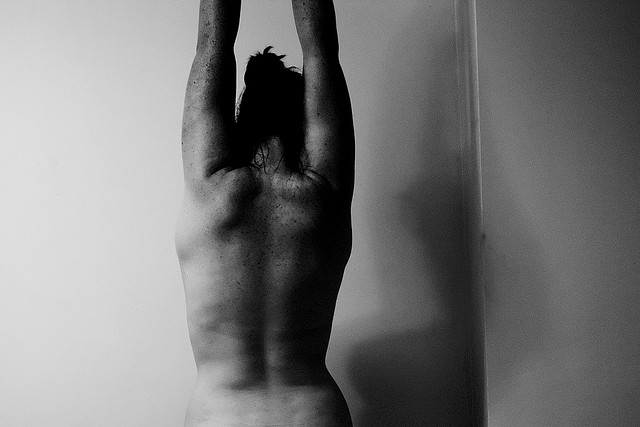Your muscles turn off after an injury.
It happened years ago.
You are so over it.
After the shock, the pain, the grief. You’ve healed. You’ve moved on.
The pain is gone. But you still don’t go to the restaurant where you and your friend got in the fight that ended your friendship.
Your ex moved away years ago, but you still don’t drive down the block where he used to live.
You don’t get scared walking home alone, but you still don’t walk down the alley where you were mugged.
We all avoid the places that remind us of deep heartache, of breathtaking grief, of emotional trauma. No matter how much our hearts have healed, self-preservation keeps us a safe distance from the places where we got hurt. It’s normal. We all do it.
I started writing this article at a restaurant a block away from the bar that holds so many, now painful, memories for me. I decided this was the day I was finally going to go back to that bar. But I didn’t. Instead I walked by. Slowly. I paused. And decided I wasn’t ready to face the memories.
Our bodies? They do the same thing. They avoid areas where they were hurt. And they keep avoiding the areas until we consciously and intentionally rewrite our stories.
When we get injured, if we break a bone, tear a ligament or rupture a disc, our brains tell our bodies to avoid using the muscles near the area where our bodies are in pain. Those muscles don’t turn back on until we tell them to. Even after we healed from an injury. Even after the pain has subsided. Even after we feel like we are back to normal, we are probably avoiding the muscles near the injury.
Research has shown that when our bodies get hurt, they do the same thing that our mind and heart do. They protect us by avoiding the area.
In the short term, this is a great strategy. Our bodies have amazing power to respond to injury and heal from pain. If you herniate a disc in your lower back, you don’t want the muscles in that area to contract. Because if they did, it would cause more squeezing on the area. Contracting those muscles could cause even more damage to the disc. And so those muscles turn off. It’s really a brilliant and complex healing response. Our bodies are really smart.
Our bodies also work collaboratively. Other muscles take over the job of helping our lower back move. So while you may be in pain, you are able to move even with an injury. For a week or two, this is great. It gives your fragile disc the time it needs to heal. But those muscles that step in to help aren’t the best muscles for the job. Sure, they get it done. But they don’t do it as well as the muscles that were designed for the task.
Studies have found that even after that injuries have healed, unless we consciously and intentionally reengage the muscles that turned off, they are not going to work. Just like my attempt to consciously and intentionally go back to the bar that held so many memories, I’m not going to just causally go in there for lunch. Hell, I couldn’t even go back in there when I tried. Healing isn’t always easy and it doesn’t always happen when we want it to. Until we intentionally reactivate and rehabilitate our bodies after an injury, we won’t start reusing those muscles.
We need to start reusing those turned off muscles. They are the muscles best suited to the task of making our bodies move. While other muscles have stepped in to help, they aren’t able to do the job as well. That can lead to further injury and additional pain.
Turning muscles back on is important in similar ways to why it’s worth it for me to go back to that bar. It’s good for me simply so I can put the past behind me. But they also have some good bands there. And they have a salad I really like. And I might have a really good time there with new friends. I can’t enjoy any of those things if I keep avoiding that bar. My life is more limited if I don’t go back there. My life doesn’t work as well and isn’t as full if I keep avoiding that place. In the case of our bodies, this is even more true. Every muscle in our body is precious. Every muscle does such important things. Ignoring any one of them limits our experience of our bodies far more than avoiding a bar ever could.
There are so many different ways to rehabilitate. You can seek professional help from a physical therapist or a chiropractor. You can be really intentional in your yoga practice—get really detailed about exactly what muscles you feel in certain postures, and ask gifted teachers to confirm you are activating the right muscles. And you can start noticing how your muscles activate in your daily life. Put your hands on your lower back, or your legs and notice if both sides activate evenly as you bend over or stand up. If not, practice until it feels more similar.
In time, we all get over the pain. But if we don’t rewrite the stories, we’ll always be holding on to that old tale of how things were before. Reestablishing muscle coordination helps our bodies know that the pain is in the past and allows us to fully engage our bodies and our lives in the present moment.
Relephant:
10 Simple Coping Tips to Deal with Chronic Pain.
Author: Meggie Smith
Editor: Travis May
Photo: Flickr/Emily











Read 4 comments and reply